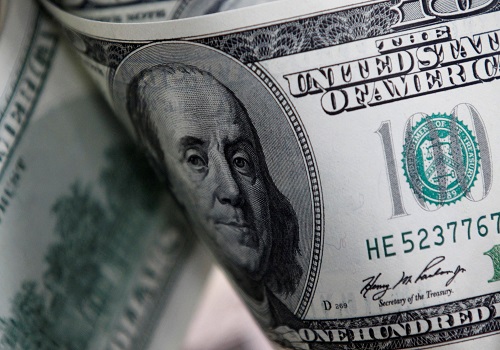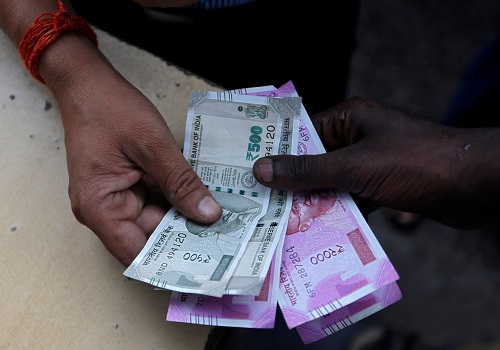Dollar slips as easing COVID curbs in China lift sentiment

The dollar slid across the board on Monday as traders piled into riskier assets after more Chinese cities eased some of their COVID related restrictions, stoking hopes of an eventual reopening of the world's second biggest economy.
Financial hub Shanghai and Urumqi in the far west were among the cities that announced an easing of coronavirus curbs over the weekend following recent, unprecedented protests against the government's uncompromising "dynamic zero-COVID" strategy.
"It may seem like they are baby steps but nonetheless quite a strong sign of China taking calibrated steps in the direction of reopening," said Christopher Wong, a currency strategist at OCBC in Singapore.
China is soon set to announce a nationwide easing of testing requirements as well as allowing positive cases and close contacts to isolate at home under certain conditions, people familiar with the matter told Reuters last week.
The dollar weakened below 7.0 yuan in offshore trade, while the onshore yuan jumped roughly 1.4% to as high as 6.9507 on Monday morning, its strongest since Sept. 13.
The dollar index, which measures the currency against six major peers including the yen and euro, was down 0.268% at 104.19, its lowest since June 28.
The index fell 1.4% last week, and 5% in November, making for its worst month since 2010. The recent bearishness toward the dollar had largely stemmed from expectations that the Federal Reserve is set to dial down the pace of its interest rate hikes after four consecutive 75 basis points increases.
Investors' focus will be on U.S. consumer price inflation data due out on Dec. 13, one day before the Fed concludes its two-day policy meeting.
The U.S. central bank is expected to increase policy rates by an additional 50 basis points at the meeting. Fed funds futures traders are now pricing for the Fed's benchmark rate to peak at 4.92% in May.
OCBC's Wong said some degree of caution is still warranted as the Fed is not done tightening. "They are still tightening, it's just that it is going to be in small steps."
Meanwhile, the Japanese yen weakened 0.20% versus the greenback to 134.59 per dollar, having gained 3.5% last week, far off October's low of 151.94.
The yen's ascent comes at a time when the spotlight has been on the drawbacks of prolonged monetary easing policy and ahead of a Bank of Japan leadership transition when governor Haruhiko Kuroda, regarded as a policty dove, ends his second term.
The BOJ should conduct a review of monetary policy framework and tweak its massive stimulus programme depending on the outcome, its board member Naoki Tamura told the Asahi daily.
"You got a case of not just the Fed slowing its pace of policy tightening but you also have the case of potential BOJ unwinding, maybe very early stage, some of its very accommodative policy," Wong said.
"The two forces coming from both sides can give the dollar/yen a bit more downside ... there is still room for dollar/yen to test lower."
The euro rose 0.32% to $1.0572, having gained 1.3% last week. It had earlier touched a more than five month high of $1.05835.
Sterling rose to $1.23450, its highest since June 17, and was last trading at $1.2327, up 0.33% on the day
The Australian dollar was up 0.59% at $0.683, while the kiwi was 0.31% higher at $0.643.
========================================================
Currency bid prices at 0634 GMT
Description RIC Last U.S. Close Pct Change YTD Pct High Bid Low Bid
Previous Change
Session
Euro/Dollar $1.0575 $1.0541 +0.32% -6.98% +1.0585 +1.0512
Dollar/Yen 134.5400 134.2950 +0.20% +16.99% +134.7600 +134.2800
Euro/Yen 142.29 141.53 +0.54% +9.19% +142.4400 +141.5700
Dollar/Swiss 0.9350 0.9368 -0.17% +2.53% +0.9393 +0.9344
Sterling/Dollar 1.2329 1.2293 +0.28% -8.84% +1.2343 +1.2251
Dollar/Canadian 1.3411 1.3474 -0.45% +6.08% +1.3473 +1.3386
Aussie/Dollar 0.6832 0.6794 +0.55% -6.02% +0.6851 +0.6764
NZ 0.6430 0.6413 +0.23% -6.09% +0.6442 +0.6367
Dollar/Dollar
All spots
Tokyo spots
Europe spots
Volatilities
Tokyo Forex market info from BOJ




















